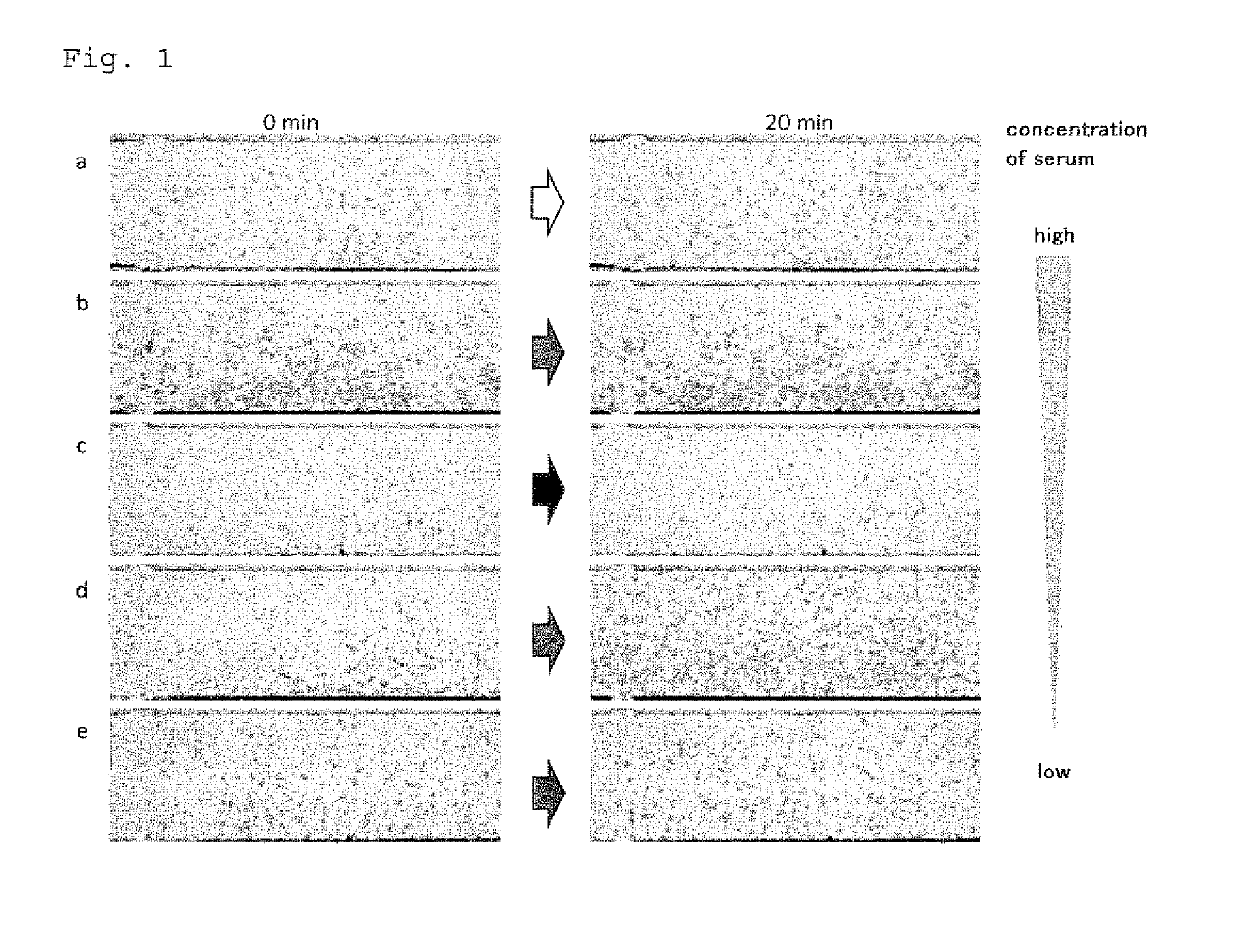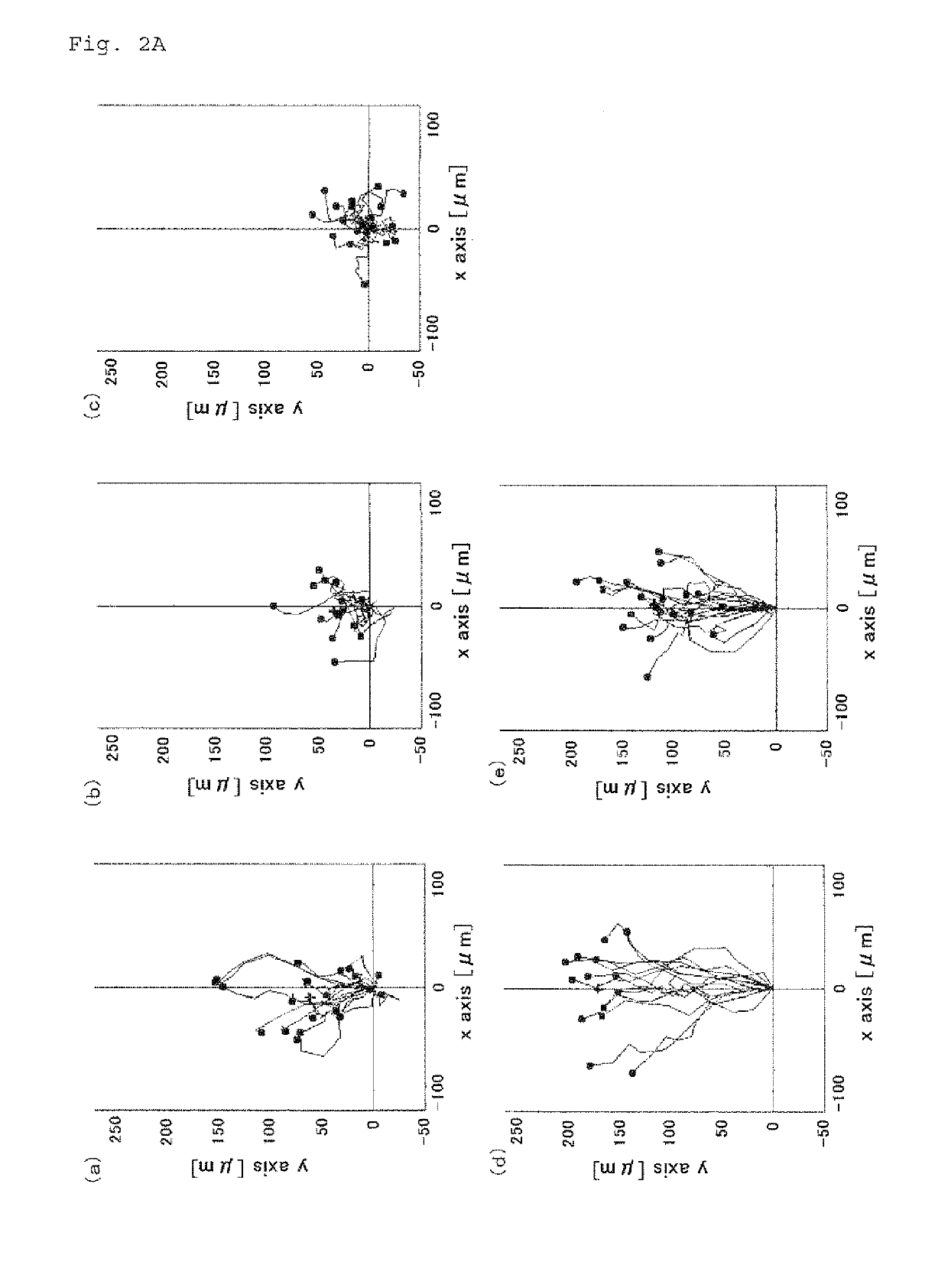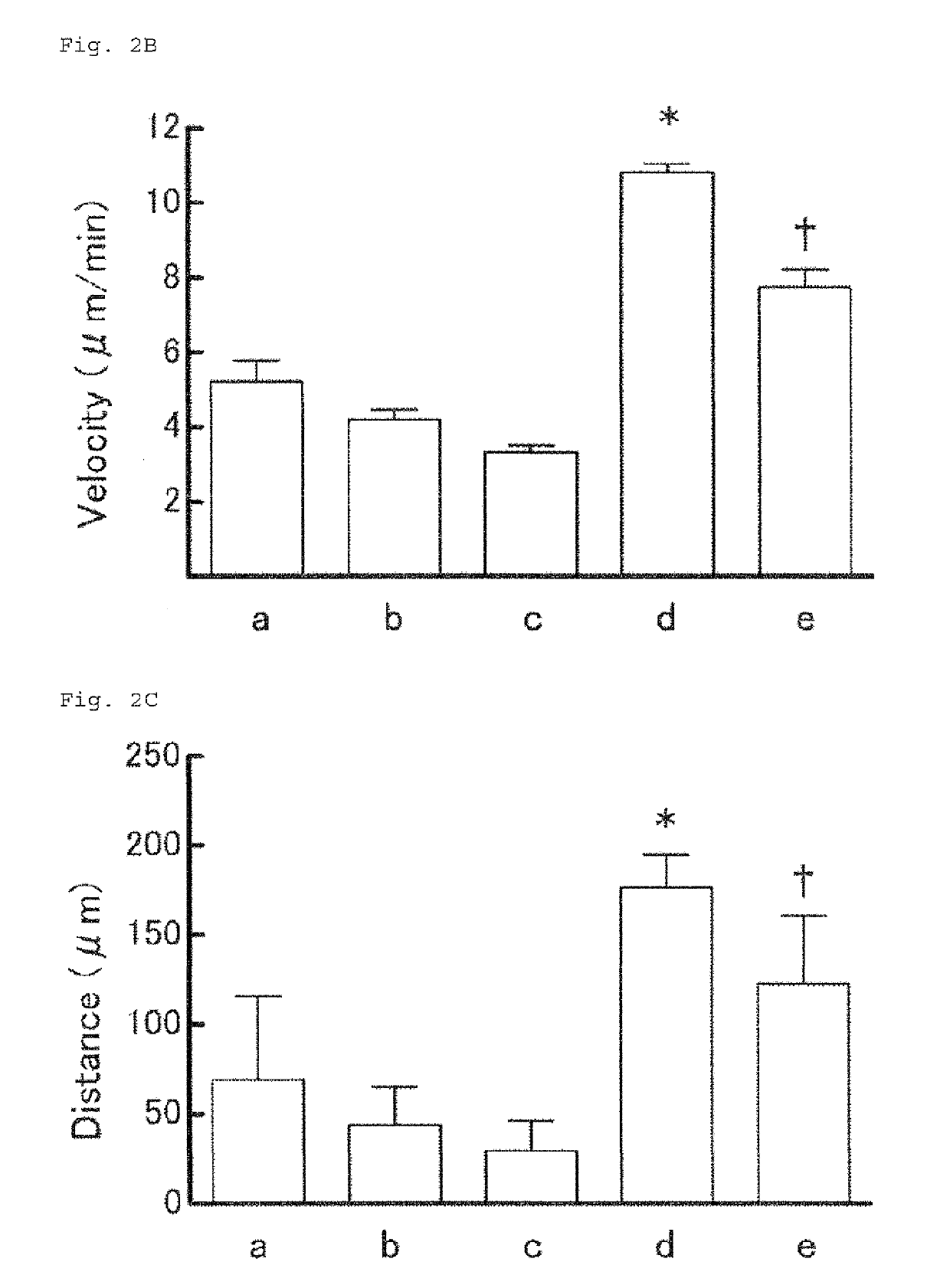Method for rapid testing allergy
a rapid testing and allergy technology, applied in the field of rapid testing allergy, can solve the problems of inability to accurately predict the development of an allergy to a drug, excessive immune response, limited means for preventing allergic diseases, etc., and achieve the effect of rapid, accurately and efficiently testing
- Summary
- Abstract
- Description
- Claims
- Application Information
AI Technical Summary
Benefits of technology
Problems solved by technology
Method used
Image
Examples
example 1
of Drug Allergy Patient by Utilizing Migration of Leukocytes Derived from Healthy Human
[0132](Patients to be Tested)
[0133]Blood withdrawal from patients having a drug allergy-like symptom and healthy volunteers, and collection and use of leukocytes have been applied to and approved by the Institutional Review Board of Fukuoka University Hospital for a clinical study mainly using the LMT. Patients who are candidates for the test were provided with explanation about the clinical study. Informed consent regarding the agreement and cooperation for the clinical study was obtained in written form. Serum and reaction solutions stimulated with antigens prepared for the LMT and remained were used, the LMT being for the patients who had developed a drug allergy-like symptom in the university hospital and needed determination of the agent inducing the allergy-like symptom.
[0134](Patient #1)
[0135]Hypersensitivity Reaction: Pancytopenia
[0136]Suspected drugs: Nafamostat mesilate (Naotamin), Nifed...
example 2
of Drug Allergy Patient by Utilizing Migration of Cells of Human T-Cell Cell Line
[0164](Serum)
[0165]Serum was prepared in the substantially same manner as in Example 1.
[0166](Chemotactic Cells)
[0167]In place of the leukocytes of the healthy volunteer, an established human T-cell cell line, Jurkat cell (American Type Culture Collection, VA, USA) was used as the chemotactic cells. The cells were suspended in 5 ml of a culture medium (DMEM: Sigma-Aldrich), cultured in a CO2 incubator at 37° C. for 1 hour in the same manner as in Example 1, adjusted to the concentration of about 5×105 cells / ml, and used as the chemotactic cells. The Jurkat cells were retained in a culture medium for subculture (DMEM containing 10% FBS (JRHBiosciences, KS, USA), 100 U / ml penicillin and 100 μg / ml streptomycin (both Sigma-Aldrich)), with the culture medium exchanged twice a week and, if necessary, the concentration adjusted.
[0168](Measurement of Cell Kinetics)
[0169]The cell kinetics was measured in the sub...
example 3
tion of Allergenic Agent by the Method Provided by the Present Invention
[0174](Serum)
[0175]Serum was prepared in the substantially same manner as in Example 1 excepting that the subject was patient #3, who was found to clearly have a positive reaction in Example 1.
[0176](Chemotactic Cells)
[0177]Chemotactic cells were prepared in the substantially same manner as in Example 1.
[0178](Solution of Antigenic Drug)
[0179]A drug solution was prepared by dissolving a drug in a Hank's balanced salt solution (HBSS: Sigma-Aldrich) if the drug was a solid preparation such as a soluble tablet or a powder. If the drug was poorly soluble, it was dissolved in Dimethyl-sulfoxide (DMSO: Sigma-Aldrich) and the solution was diluted with HBSS so that the final concentration of DMSO was 1% or less. A solution containing the drug solution and the serum of the patient in a ratio of 1:1 was used as a solution of the antigenic drug. The concentrations of the suspected drugs were set to ½ of the Cmax in princip...
PUM
| Property | Measurement | Unit |
|---|---|---|
| time | aaaaa | aaaaa |
| time | aaaaa | aaaaa |
| time | aaaaa | aaaaa |
Abstract
Description
Claims
Application Information
 Login to View More
Login to View More - R&D
- Intellectual Property
- Life Sciences
- Materials
- Tech Scout
- Unparalleled Data Quality
- Higher Quality Content
- 60% Fewer Hallucinations
Browse by: Latest US Patents, China's latest patents, Technical Efficacy Thesaurus, Application Domain, Technology Topic, Popular Technical Reports.
© 2025 PatSnap. All rights reserved.Legal|Privacy policy|Modern Slavery Act Transparency Statement|Sitemap|About US| Contact US: help@patsnap.com



